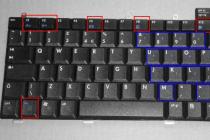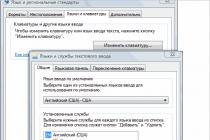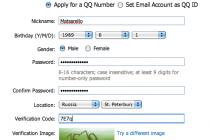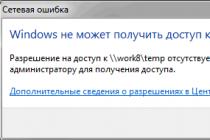The owner of a garage or a private house often needs a machine or emery with an asynchronous electric motor for processing metals and wood. And there is only a voltage of 220 volts.
Connecting a three-phase motor to a single-phase network in this case can be done in several ways. Here I will consider three available and common capacitor start circuits.
All of them have been tested on personal experience more than once.
I immediately warn experienced electricians who opened this article: the material is prepared for beginners. Therefore, it is voluminous. If you don’t want to read everything, then here are some quick tips:
- use the triangle circuit, after checking the health of the engine;
- choose working capacitors at the rate of 70 microfarads per 1 kilowatt of power, and increase the starting ones by 2-3 times;
- during the adjustment process, adjust the capacitances according to the load and heating of the windings;
- do not forget to observe safety measures with electric current and tools.
In my experience, I have repeatedly convinced myself that the initial check of the technical condition of the equipment allows to eliminate many errors, saves the overall time of work, and significantly prevents injuries and accidents.
Three-phase asynchronous motor: what to look for before connecting it
With a few exceptions, we get the asynchronous one in an unknown state. Very rarely it has a test certificate and a certified guarantee from an electrical laboratory.
The mechanical condition of the stator and rotor: what can interfere with the operation of the engine
The fixed stator consists of three parts: the middle body and two side covers, pulled together with pins. Pay attention to the gap between them, the tightening force of the nuts.
The body must be tightly compressed. Inside it, a rotor rotates on bearings. Try spinning it by hand. Evaluate the applied force: how the bearings work, if there are any beats.
Without proper experience, minor defects cannot be detected in this way, but a case of gross jamming will immediately appear. Listen to the noises: is there any contact with the stator elements during the rotation of the rotor.
After starting the engine at idle and running for a short time, listen again to the sounds of rotating parts.
Ideally, it is better to disassemble the stator, visually assess its condition, rinse the contaminated rotor bearings and completely replace their grease.

Electrical characteristics of stator windings: how to check the assembly diagram
The manufacturer indicates all the main parameters of the electric motor on a special plate attached to the stator housing.

These factory specifications can only be trusted if you are sure that after the factory, none of the electricians changed the winding connection diagram and did not make involuntary mistakes. And such cases came across to me.
Yes, and the plate itself can be erased or lost over time. Therefore, I propose to deal with the technology of spinning the rotor.
To understand the electrical processes occurring inside the motor stator, it is convenient to imagine it as an ordinary toroidal transformer, when three equivalent windings are symmetrically located on the annular core of the magnetic circuit.
The stator circuit is assembled inside a closed case, from which only six ends of the windings are removed.

They are marked and connected on a terminal block closed by a lid for assembly according to a star or delta scheme by a typical rearrangement of jumpers.

The triangle assembly is shown on the right side of the picture. I publish the layout of the jumpers for the star below.

Electrical methods for checking the winding assembly circuit
But not everything is as simple as it might seem at first glance. There are a number of engines that deviate from these rules.
For example, a manufacturer may produce electric motors not for universal use, but for operation in specific conditions with the connection of windings according to the star scheme.
In this case, he can collect the three ends of the windings inside the stator housing, and bring out only four wires to connect to the phase and zero potentials.
The mounting of these ends is usually performed in the area of the back cover. To switch the windings to a triangle, you will need to open the case and draw additional conclusions.
It's not a difficult job. But it requires careful handling of the varnish coating of the copper wire. When the wire is bent, it may be damaged, which will lead to a violation of the insulation and create an interturn short circuit.
What to do if there is no pin marking
On an old asynchronous motor, the wires can be removed from the terminals, and the factory marking is lost. There were also such instances when six ends simply stuck out of the body. They must be called and marked.
We carry out the work in two stages:
- We check the belonging of the ends to the windings.
- We define and label each output.
If an interturn short circuit occurs in the winding, then, as a rule, it can be determined by measuring a multimeter in ohmmeter mode. To do this, carefully analyze and compare the active resistances of each chain.
How to check the magnetic field of the stator at the factory
When voltage is applied to a serviceable electric motor, a rotating magnetic field is created. It is visually assessed with a metal ball that repeats the rotation.

I do not urge you to repeat this experience. This example is intended to help understand that the operation of an induction motor is based on the interaction of the magnetic fields of the stator and rotor.
Only the correct connection of the windings ensures the rotation of the ball or rotor.
Motor power and winding wire diameter
These are two interrelated quantities because the cross section of the conductor is selected according to its ability to withstand heating from the current flowing through it.
The thicker the wire, the more power can be transmitted through it with acceptable heating.
If there is no plate on the engine, then its power can be judged by two signs:
- winding wire diameter.
- The dimensions of the core of the magnetic circuit.
After opening the stator cover, analyze them visually.
Connecting a three-phase motor to a single-phase network according to the star scheme
I'll start with a warning: even experienced electricians make mistakes during work, which are called the "human factor". What can we say about home craftsmen ...
The star connection diagram is shown in the picture.

The ends of the windings are assembled at one point by horizontal jumpers inside the terminal box. No external wires are connected to it.
Phase (through a circuit breaker) and zero household wiring are fed to two different terminals of the beginning of the windings. A parallel chain of two capacitors is connected to the free terminal (in Figure H2): Cp - working, Cp - starting.
The working capacitor is connected by the second plate rigidly to the phase wire, and the starting capacitor is connected through an additional SA switch.
When starting the electric motor, the rotor must be untwisted from a state of rest. It overcomes the forces of friction of bearings, counteraction of the environment. For this period, it is required to increase the magnitude of the stator magnetic flux.
This is done by increasing the current through an additional circuit of the starting capacitor. After the rotor enters the operating mode, it must be turned off. Otherwise, the starting current will overheat the motor winding.
Disabling the start chain with a simple switch is not always convenient. To automate this process, circuits with relays or starters operating on time are used.
Among the masters of do-it-yourselfers, the start button from Soviet activator-type washing machines is popular. It has two built-in contacts, one of which, after switching on, turns off automatically with a delay: what we need in our case.
If you look closely at the principle of supplying single-phase voltage, you will see that 220 volts are applied to two windings connected in series. Their total electrical resistance adds up, weakening the amount of current flowing.
Connecting a three-phase motor to a single-phase network according to the star scheme is used for low-power devices, it is characterized by increased energy losses up to 50% from a three-phase power system.
Triangle scheme: advantages and disadvantages
Connecting an electric motor using this method involves using the same external circuit as that of a star. Phase, zero and the midpoint of the lower plates of the capacitors are mounted in series on three jumpers of the terminal box.

By switching the outputs of the windings in a triangle circuit, the input voltage 220 creates more current in each winding than in the star. There is less energy loss, higher efficiency.
Connecting the motor according to the delta circuit in a single-phase network makes it possible to use up to 70-80% of the consumed power usefully.
To form a phase-shifting chain, it is required to use a smaller capacitance of working and starting capacitors.
When the engine is turned on, it may start to rotate in the wrong direction. He needs to be reversed.
To do this, it is enough in both circuits (star or triangle) to swap the wires coming from the network on the terminal block. The current will flow through the winding in the opposite direction. The rotor will change direction of rotation.
How to choose capacitors: 3 important criteria
A three-phase motor creates a rotating magnetic field of the stator due to the uniform passage of sinusoidal currents through each winding, separated in space by 120 degrees.

In a single-phase network, this is not possible. If you connect one voltage to all 3 windings at once, then there will be no rotation - the magnetic fields will balance. Therefore, voltage is applied to one part of the circuit as it is, and the current is shifted to the other along the angle of rotation by capacitors.
The addition of two magnetic fields creates an impulse of moments that spin the rotor.
The performance of the created circuit depends on the characteristics of the capacitors (capacitance and allowable voltage).
For low-power engines with easy starting at idle, in some cases it is permissible to do with only working capacitors. All other engines will need a starting block.
I draw your attention to three important parameters:
- capacity;
- permissible operating voltage;
- construction type.
How to choose capacitors by capacitance and voltage
There are empirical formulas that allow you to perform a simple calculation on the magnitude of the rated current and voltage.

However, people often get confused in formulas. Therefore, when checking the calculation, I recommend taking into account that for a power of 1 kilowatt, it is required to select a capacitance of 70 microfarads for the working chain. The dependence is linear. Feel free to use it.
It is possible and necessary to trust all these methods, but theoretical calculations must be verified in practice. The specific design of the engine and the applied loads on it always require adjustments.
Capacitors are calculated for the maximum current value allowed by the wire heating conditions. This consumes a lot of electricity.
If the electric motor overcomes loads of a smaller size, then it is desirable to reduce the capacitance of the capacitors. This is done empirically during setup, measuring and comparing the currents in each phase with an ammeter.
Most often, metal-paper capacitors are used to start an asynchronous electric motor.

They work well, but have low denominations. When assembled into a capacitor bank, a rather dimensional structure is obtained, which is not always convenient even for a stationary machine.
Now
The industry produces small-sized electrolytic capacitors adapted to work with AC motors.

Their internal arrangement of insulating materials is adapted to work under different voltages. For a working circuit, it is at least 450 volts.
For a starting circuit with conditions for short-term switching on under load, it is reduced to 330 by reducing the thickness of the dielectric layer. These capacitors are smaller in size.
This important condition should be well understood and applied in practice. Otherwise, 330 volt capacitors will explode during prolonged operation.
Most likely, for a particular engine, you can’t get off with one capacitor. You will need to assemble the battery using their serial and parallel connection.

When connected in parallel, the total capacitance is summed up, and the voltage does not change.
Connecting capacitors in series reduces the total capacitance and divides the applied voltage into parts between them.
What types of capacitors can be used
The rated voltage of the network is 220 volts. Its amplitude value is 310 volts. Therefore, the minimum limit for short-term operation at start-up is 330 V.

The voltage margin up to 450 V for working capacitors takes into account surges and impulses that are created in the network. It cannot be underestimated, and the use of containers with a large reserve significantly increases the dimensions of the battery, which is irrational.
For a phase-shifting circuit, it is permissible to use polar electrolytic capacitors, which are designed to allow current to flow in only one direction. The circuit for their inclusion should contain a current-limiting resistor of a few ohms.

Without it, they quickly fail.
Before installing any capacitor, it is necessary to check its real capacity with a multimeter, and not rely on factory markings. This is especially true for electrolytes: they often dry out prematurely.
Scheme of phase shift of currents by capacitors and a choke: what I did not like
This is the third construction promised in the title, which I implemented two decades ago, tested in the work, and then abandoned. It allows you to use up to 90% of the three-phase motor power, but has disadvantages. About them later.
I assembled a three-phase voltage converter for a power of 1 kilowatt.

It consists of:
- choke with inductive resistance of 140 Ohm;
- capacitor bank for 80 and 40 microfarads;
- adjustable 140 ohm rheostat with a power of 1000 watts.
One phase works in the usual way. The second with a capacitor shifts the current forward by 90 degrees in the direction of rotation of the electromagnetic field, and the third with a choke forms its lag by the same angle.
The currents of all three phases of the stator are involved in the creation of the phase-shifting magnetic moment.
The throttle body had to be assembled with a mechanical structure made of wood on springs with a threaded air gap setting to adjust its characteristics.

The design of the rheostat is generally "tin". Now it can be assembled from powerful resistances bought in China.

I even thought of using a water rheostat.

But I refused it: it's too dangerous a design. I just wound a thick steel wire on an asbestos pipe for the experiment, put it on the bricks.
When I started the engine of the circular saw, it worked normally, withstood the applied loads, and sawed quite thick pads normally.
Everything would be fine, but the meter wound up a double rate: this converter takes on the same power as the engine. The choke and wire warmed up well.
Due to high power consumption, low security, complex design, I do not recommend such a converter.
Safety Precautions When Connecting a Three-Phase Motor: Reminder
Work on the adjustment of the circuit under voltage must be carried out by trained people. Knowledge of TB is a must.
The use of an isolating transformer significantly reduces the risk of being electrocuted. Therefore, use it for any adjustment work under voltage.
A special electrician's tool with dielectric handles not only makes work easier, but also keeps you healthy. Don't neglect them!
If you have any questions or notice inaccuracies, then use the comments section.

The article contains tips on how you can connect such an electric motor to a single-phase network without using a capacitor bank or a frequency converter due to a current pulse from an electronic key. They are supplemented by diagrams and a video.
The principle of operation of the electronic key
If you assemble the windings of an asynchronous electric motor according to the triangle scheme and connect them to a single-phase voltage of 220 volts, then the same currents will flow through them, as shown in the graph below.

The angular displacement of any winding relative to others is 120 degrees. Therefore, the magnetic fields from each of them will add up, eliminating mutual influence.
The resultant stator magnetic field created will not affect the rotor: it will remain at rest.
In order for the electric motor to start rotating, it is necessary to pass currents shifted by 120 ° through its windings, as is done in a normal three-phase power system or due to. Then the engine will produce power with minimal losses, having the highest efficiency.


Widespread industrial allows it to work, but with lower efficiency and high losses, which, most often, is quite acceptable.

Alternative methods are:
- Mechanical spin-up of the rotor, for example, due to the manual winding of the cord on the shaft and its sharp scrolling with a jerk when the voltage is applied;
- Phase shift of currents due to the short-term use of an electronic key that switches the electrical resistance of one winding.
Since the first method “wound and pulled” does not cause difficulties, we immediately analyze the second.
The upper diagram shows the electronic key "k" connected in parallel with the winding B. This rather conventional designation is adopted to explain the principle of operation of an electric motor due to the formation of a current pulse.
How the engine starts
The stator windings are connected in a delta connection. One of them (A) is supplied with 220 volts. Parallel to it, another chain of two windings in series (B + C) is connected.
According to Ohm's law, the mains voltage creates currents in them. Their value depends on the resistance. All windings are the same. Therefore, in (A) the current is greater, and (B + C) is 2 times less in magnitude. And they are in phase. In this situation, they are not able to create a rotating magnetic field sufficient to start the rotor.
Connected in parallel with winding (B) is an electronic circuit, designated as key K. It is in the open state, but briefly closes when the maximum voltage is reached on winding C.
The electronic key short-circuits winding B and the voltage drop across winding C increases by a factor of two, which ultimately ensures the phase shift of the currents in windings A and C. It is important to note that the current in windings (A) and (B + C) at this moment equals zero.

The phase shift angle φ, necessary to start the engine, is sufficient to withstand in the range of 50 ÷ 70 °, although the ideal option is 120.
The design of the phase-shifting electronic key can be assembled from different parts. The most suitable devices for domestic purposes, according to their complexity, are presented below.
Electric motor starting scheme up to 2 kW
Its description can be found in Radio magazine #6, 1996. The author of the article, V Golik, proposes the design of a bidirectional (positive and negative half-harmonics) electronic switch on two diodes and thyristors with control of a transistor unit.

Technology Description
Power diodes VD1 and VD2 together with thyristors VS1, VS2 form a bridge, which is controlled by direct and reverse bipolar transistors. The position of the trimmer resistor R7 affects the opening voltage of VT1, VT2.
The operation of the transistor switch provides a short-term phase shift of the currents in the windings and the creation of a rotating magnetic field that spins the rotor.
Due to the applied moment of magnetic forces to the rotor, the latter begins to rotate. Its energy is constantly replenished at each half-wave by the next impulse.
Mounting Features
The author made an electronic key on a fiberglass board and placed it in an insulated case with the ability to connect input and output circuits through contact leads. The version of the scheme for surface mounting also has the right to be implemented.
For the operation of electric motors of small powers, it is permissible to place power diodes and thyristors without radiators. But it is better to ensure good heat removal from them and reliable operation in advance by including these elements in the design of the electronic key.
The ratings of electronic components are indicated directly on the diagram.
In order to ensure safety, it is necessary to properly insulate the housing of the electronic unit, to exclude accidental contact with its parts during operation: they are all under voltage of 220 volts.
Setup principles
The slider of the resistor R7 "Mode" has two extreme positions:
- minimum;
- and maximum resistance.
In the first case, the electronic key is open and creates a maximum current shift pulse in the winding, and in the second case it is closed: the rotation of the rotor is excluded.
The start of a three-phase motor is carried out at the maximum allowable phase shift of the current inside the winding. Then, by position R7, its operating speed and power are set.
Proven Models
- the number of revolutions is 1360 and the power is 370 watts (AAAM63V4SU1);
- 1380 rpm, 2 kW.
The results of the experiments suited him.
Two triac circuits
The following 2 electronic key designs were described by V Burlako in 1999. They are published in the magazine Signal #4.
Starting a light electric motor
The device is designed for engines with power up to 2.2 kW, has a minimum set of electronic parts.

Capacitor C, having a capacitance, under the action of the voltage applied to its plates, shifts the current vector forward by 90 degrees, directing it to control the VS2 dynistor.
The potential difference across the capacitor is controlled by the total resistance R1, R2. The dinistor pulse is fed to the control electrode of the triac VS1, which injects current into the motor winding.
Scheme of starting the engine under load
For machines and mechanisms that create a large resistance to the spin-up of the rotor, it can be recommended to switch the windings to an open star circuit with the creation of two spinning moments.

The polarity of the motor windings is indicated by dots in the diagram. Phase-shifting chains of current pulses work according to the same technology as in the previous cases. The ratings of electrical parts are affixed next to their graphic designations.
Setup features
All three contacts of this starter, when the "Start" button is pressed, close simultaneously, and when released:
- the two extreme ones remain closed;
- middle - breaks, turning off the starting winding circuit.
A current pulse is applied through this middle contact in both circuits. The circuit works only for the time required to spin up the engine, after which it is taken out of operation, disconnected from the supply voltage.
The moment of starting the engine in each circuit is selected after applying voltage by changing the resistance R2. At the same time, large currents pass in the triangle until the rotor spins up, causing strong vibrations of the structure. To reduce them, it is recommended to select a phase-shifting pulse in steps, and not smoothly.
With the optimal position of R2, the engine starts without vibrations.
For low power motors, it is possible to install triacs without cooling radiators, but the latter still increase the reliability of the circuit.
My opinion on the method
In the three schemes considered, the operating mode current flows through all connected windings. The full expenditure of the applied energy is not spent profitably. Only about 30% of its power creates the rotation of the rotor. The rest of the order of 70% is irretrievable losses.
If someone is satisfied with starting a three-phase motor in a single-phase network according to this scheme, then this is your choice. I made a review of these schemes to show their positive and negative sides, without imposing my own opinion.
The creators of videos on YouTube began to use this topic massively, gaining the number of views and subscribers, like YUKA LAHT, in their video “Without capacitor start of a three-phase motor”.
Make your choice consciously, and if you still have questions on the topic, now it’s convenient for you to ask them in the comments.
The 220V electric motor is a simple and widespread device. Due to this voltage, it is often used in household appliances. However, it is not without its shortcomings. About what these electric motors are, about their application, cons and ways to solve problems, as well as the possibility of connecting to the network, we will tell in the article.
single phase devices. Description
If it is necessary to connect a universal collector motor with series excitation, the winding is connected to the collector-brush assembly. After the shaft is loaded by the device with which the engine will work, the necessary voltage is applied.
Generally DC brushed motors are low voltage. Therefore, to connect an electric motor of 3000 rpm. min 220V, it is necessary to use an appropriate power supply with transformer and rectifier.

Connecting a three-phase motor
Nowadays, it is not uncommon for motorists to use an electric motor. If it needs to be replaced or repaired, then the question may arise of how to connect the electric motor to a 220V network. A three-phase motor can easily be activated without calling specialists, using the recommendations below.
A screwdriver, a thermal relay, electrical tape, an automatic machine, and a tester can come in handy as tools.
detailed instructions
The old motor is removed and the neutral wire is marked with electrical tape. If it is reinstalled, then the neutral wire can be easily determined using an indicator. At the end of it, the light bulb will not light up.
The new engine is equipped with fittings with a magnetic starter, as well as with an automatic machine and a thermal relay. The fittings are installed in the shield.
The thermal relay is connected to the starter. When choosing the latter, you need to be sure that it matches the power of the motor.
The input terminals are connected to the terminals of the machine, except for the neutral wire. The output terminals are connected to the same thermal relay. At the output of the starter, a cable is connected directly to the motor.
With a power of less than one kilowatt, the machine can be connected bypassing the magnetic starter.
To connect the electric motor, remove the cover. On the terminal block, the leads will be connected in the form of a triangle or a star. The ends of the cable are connected to the blocks. In the form of a star, the contacts are connected alternately.
If the conclusions are arranged randomly, then a tester is used. It is connected to the ends, looking for windings. After that, they are connected as in the shape of a star, and the leads of the coils are assembled to a point. The remaining ends connect the cable.
The engine is covered with a lid and the operation of the mechanism is checked. If the shaft rotates in the wrong direction, any input wires are simply swapped.
There are many varieties of electric motors, but for all the main characteristic is the mains voltage from which they operate and their power. We suggest considering how to connect an electric motor from 380 to 220 V in the star-delta way.
There are several types motor connections from 380 to 220:
- Star-triangle;
- With the help of capacitors.
Each of the methods has its own characteristics, advantages and disadvantages.
Star triangle diagram
In many domestic electric motors, a star circuit has already been assembled, you only need to implement a triangle. In fact, you need to connect three phases and assemble a star from the remaining six ends of the winding. For a better understanding, see the star and delta drawing of the motor below. Here the ends are numbered from left to right, numbers 6, 4 and 5 are connected to three phases, as in the diagram:
Photo - Star and triangle of the electric motorIn a star connection with three leads, or as it is also called a star-triangle, the most important advantage is that the maximum power of the electric motor is generated. But at the same time, this compound is quite rarely used in production, much more often it can be found among amateur craftsmen. This is mainly because the circuit is very complex, and in powerful enterprises it simply does not make sense to organize such a laborious connection.
 Photo - star connection
Photo - star connection In order for the circuit to work, you will need three starters. The diagram is shown in the drawing below.
 Photo - star-triangle connection diagram
Photo - star-triangle connection diagram To the first starter, which is designated K1, an electric current is connected on one side, and the stator winding is connected to the other. The free ends of the stator are connected to the starters K2 and K3. After that, the windings from the K2 starter are also connected to the remaining phases to form a triangle. When the K3 starter is turned on in the phase, the remaining ends are shortened a little and you get a star circuit.
Note that the third and second magnetic starters cannot be turned on at the same time. This can lead to a short circuit and an emergency shutdown of the electric motor machine. In order to avoid this, a kind of electric blocking is implemented. The principle of its operation is simple - when one starter turns on, the other turns off, i.e. blocking opens the circuit of its contacts.
The principle of operation of the circuit is relatively simple. When the first starter, designated K1, is connected to the network, the motor time relay also turns on the third starter K3. After the engine is started according to the star scheme and starts to work with more power than usual. After a certain time period, the time relay turns off the contacts of the third starter and turns on the second one. Now the engine is working in a delta pattern, reducing power slightly. When you need to turn off the power, the first starter circuit is turned on, during the next cycle the circuit is repeated.
Video: engine 380 to 220
How else can you connect the electric motor
In addition to the star-delta connection, there are also several more options that are used more often:

Complementing the paragraph about capacitors, it should be noted that it is necessary to select this component based on the minimum allowable capacity, gradually increasing it by trial methods to the optimal one required by the engine. If the electric motor is idle for a very long time, then it can simply burn out when connected to the network. Also remember that even after you have turned off the electric motors, capacitors store voltage at their contacts.
In no case do not touch them, but preferably protect them with a special insulating layer that will help avoid accidents. Also, before working with them, you need to do a discharge.
In a personal household, it is often necessary to connect some kind of machine or device to facilitate activities. It can be a feed cutter, a homemade crusher, a circular saw, a concrete mixer, and much more. All devices usually use asynchronous 3 phase motors. They are the most common. It remains only to choose the method of connecting this motor to a single-phase 220 V network.
Standard connection
All three-phase asynchronous motors are connected to a 380 V network. At the same time, they issue maximum power and the highest turnover. But not every owner has the opportunity to carry out all three phases to his site. This is due to the financial costs of installing special meters and various electricity metering panels. In addition, the paperwork itself takes a lot of time.
According to the standard scheme, in order to connect a three-phase motor to 380 V, three phases are connected with standard motor terminals through the starters with which the start is carried out. In the junction box of the engine, three contacts are usually free, to which three phases are connected. There is absolutely no difference which phase to connect to a particular wire. True, there is one caveat - when changing the connection wires, without touching the third wire, they get the rotation of the electric motor in the other direction, which is sometimes necessary in economic activities.
Winding connection
 Connection diagrams there are only two windings in the motor- "star" or "triangle". And how they are connected determines the performance of the motor. No power is lost in any connection. But under excessive load, engines with a “star” slower drop their speed than their counterparts with a “triangle”. From this it is concluded that motors with a "star" require less starting current and, therefore, load the power grid less at startup.
Connection diagrams there are only two windings in the motor- "star" or "triangle". And how they are connected determines the performance of the motor. No power is lost in any connection. But under excessive load, engines with a “star” slower drop their speed than their counterparts with a “triangle”. From this it is concluded that motors with a "star" require less starting current and, therefore, load the power grid less at startup.
Motors with delta windings give out their power to the end even under heavy load, without losing any speed at all. But then they stop abruptly, and their next start requires a huge starting current, which excessively overloads the electrical network.
In industry, both connection schemes are used. Engines with a "star" are used where their systematic switching on and off is required, for example, on any lines of production, processing, assembly, and so on. Motors in which the windings are connected in a "triangle" are needed to work in constant mode loads, for example, an unloading conveyor from a mine and more.
In personal subsidiary farms, engines are most often used, in which the windings are connected according to the principle of "star". According to this scheme, the engines start easily, and this does not load the electrical network of a private house.
Electric motor in home network
 The usual nominal voltage of a home outlet is 220 V. It is considered single-phase, and all electrical Appliances from the TV to the latest coffee grinder.
The usual nominal voltage of a home outlet is 220 V. It is considered single-phase, and all electrical Appliances from the TV to the latest coffee grinder.
But if it is necessary to turn on a three-phase motor in a single-phase network, several problems arise. Namely:
- launch is not possible without additional devices;
- when the engine is running, 30 - 40% of the power is lost. This is a forced loss, since only two stator windings are involved in the work instead of three.
Still, asynchronous three-phase motors up to 2.2 kW are successfully connected to a regular home outlet. There are three proven ways to do this.
- Capacitive connection of the electric motor.
- Resistor connection.
- Inclusion through the frequency converter.
All three connection methods have their pros and cons, so choose the most convenient in relation to specific conditions. And also it all depends on the financial capabilities of the owner.
Capacitor inclusion
This is the most common way. And it consists in introducing a certain number of containers in order to a phase shift has occurred third unused stator winding. This makes starting the engine much easier. How to connect a 3-phase 220 volt motor can be seen in detail in the diagram. Two types of stator winding connections are immediately presented here.


- C1-C4, C2-C5, C3-C6 - designations of the stator windings;
- Cp - working capacitor;
- Sp - starting capacitor;
- KN - button to start.
Of course, if the engine without the use of capacitors is thoroughly spun manually up to 1 thousand rpm, and then connected to a 220 V network, then most likely it will work. But no one has ever done this. Usually searched or bought containers to launch.
The capacity of the working capacitor is calculated by the formula C \u003d 67 × P, where P is the engine power in kW, and C is the capacitance in microfarads. In practice, they use an even simpler formula - 7 microfarads for every 100 watts of power. For example, for a 2.2 kW motor, a 154 uF capacitor is needed. Capacitors of such large capacities are quite rare, so they are collected several and connected in parallel. In this case, it is necessary to take into account the voltage for which they are designed. It should be more than 220 volts by about one and a half times.
Typically, capacitors of such types as BGT, KBP, MBGCH, MBGO and the like are used. This is the most safe paper containers capable of withstanding significant overload when starting the engine. In addition, they are slightly susceptible to heat. But in the absence of them, electrolytic capacitors are also used. In this case, the bodies of these containers are connected and well insulated, since after the electrolyte has dried they are capable of exploding under load. True, quite rare.
When starting an engine with a power of up to 2.2 kW, only a working capacitor is used. It is quite enough to disperse the engine to standard speed. For higher power, a starting capacitor must also be used. Its capacity is 2.5 - 3 times more than the working one, that is, for a 2.2 kW motor it will be 300 - 450 microfarads. It is electrolytic that is often used as starting containers, since in this case they work for a short time and are needed only for starting. After the motor has reached its full speed, the starting capacitors are turned off with the KN button, as shown in the diagram.
To change the direction of rotation of the electric motor, it is necessary to make switches. To do this, refer to the circuit where the windings are connected by a "star":
- instead of C1-C2, connect C1-C3 to a single-phase network;
- connect the working capacitor Cp between C2 and C3;
- also switch the button with the starting capacitor to C2-C3.
In the "triangle" connection scheme, similar actions are carried out.
There is a special electrical circuit for switching the rotation of the engine, which is rarely used in practice. Usually adjust the rotation in any one direction. The motor is needed to drive a specific device or unit, and to change the rotation of the working body, an ordinary gearbox is used. This can be seen on the example of a lathe or other machine tool. In private farming, for example, to change the course of the tape, where potatoes are calibrated, they also use a gearbox. This greatly simplifies a certain task and provides good safety engineering.
Resistor switching of the electric motor
 In the absence of capacitors to turn on a three-phase motor in a single-phase network, sometimes use resistors. These are powerful ceramic or glass resistances. Tungsten wire up to 1 mm thick will fit perfectly. When connected, it is twisted into a spring and placed in a ceramic tube.
In the absence of capacitors to turn on a three-phase motor in a single-phase network, sometimes use resistors. These are powerful ceramic or glass resistances. Tungsten wire up to 1 mm thick will fit perfectly. When connected, it is twisted into a spring and placed in a ceramic tube.
The resistance size is calculated by the formula R \u003d (0.87 × U) / I, where U is the voltage of a single-phase network 220 V, and I is the current in amperes A.
The connection scheme with resistors is used only for motors up to 1 kW, since a large energy loss occurs in the resistance.
Via frequency converter
Starting a 3-phase motor from a 220 V network with this device is now most promising. That is why it is used in the latest projects for the control of electric drives. The fact is that when the voltage and frequency of the network change, the number of revolutions of the motor changes, and as a result, the direction of rotation.
The converter is two electronic parts that are in the same building. This is a control module and power. The first is directly responsible for starting and adjusting, and the second feeds the motor with electricity.

Using a converter to start a three-phase motor from a home network allows drastically reduce the starting current and hence the load. In practice, the motor can be started gradually, increasing its speed from 0 to 1000 - 1500 rpm.
While such a device has a very high cost, which limits its use in the household. In addition, due to the poor quality of the power grid itself, the device is constantly being improved. This forces many owners to use the old proven methods of connecting three-phase motors to a single-phase network.
The use of single-phase motors in everyday life
In addition to three-phase motors, single-phase asynchronous motors are also widely used. They are used everywhere in powerful pumps, in washing machines, in heating and ventilation systems, and are also popular with private entrepreneurs who decide to open their own sawmill.
Such motors are included in a conventional 220 V network. Inside these motors there are two windings - one of them is starting and the other is working. When creating a phase shift between them, a rotating magnetic field is obtained - this is the main condition for starting these engines. The phases are shifted, as in the case of three-phase motors, by adding capacitances. The wiring diagram of a single-phase motor is very similar to that of a three-phase motor.
The calculation of capacitors is carried out according to the same formula, or it is taken into account that for each kilowatt of motor power, 75 microfarads of capacitance are needed. This is for a working capacitor, and for a starting one - three times more. In addition, the capacitors must withstand a voltage of at least 300 V. With a low engine power, one working capacity is completely manageable.














